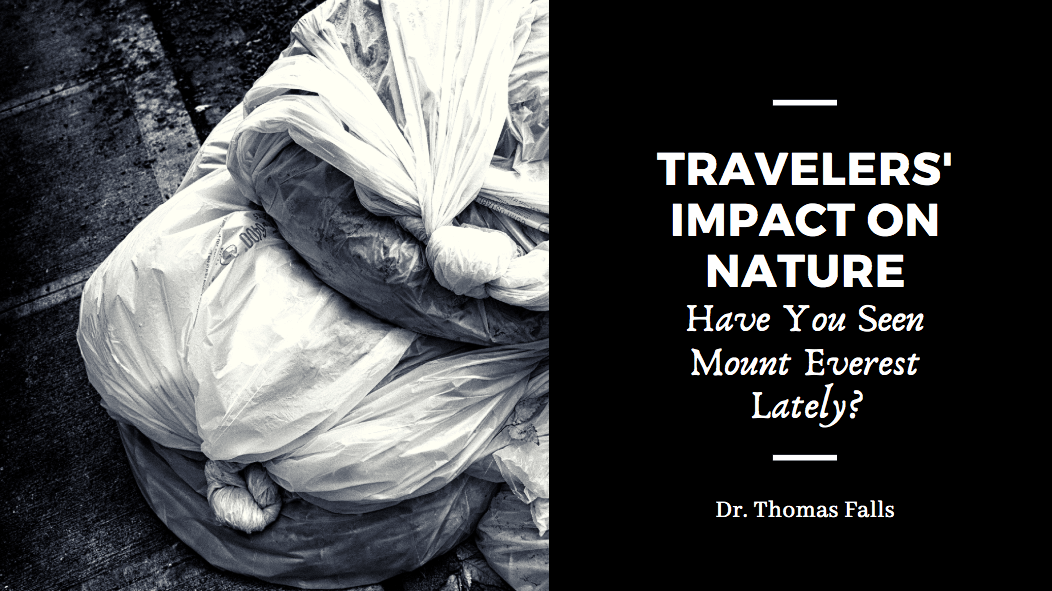Picture this. You’ve traveled thousands of miles to witness the natural beauty of Mount Everest, but the scene isn’t what you expected. You aren’t the first human to make that journey and the ones who came before you weren’t concerned with cleaning up after themselves. Instead of an unblemished, serene landscape, you’re facing a once-beautiful landscape that is riddled with human waste.
Mount Everest has been described as “the world’s highest garbage dump,” but this isn’t the only part of the world where travelers have left their unwanted items behind. The Mediterranean Sea now contains staggering amounts of trash left behind by its annual influx of 200 million tourists.
The Problems That Arise
Most of the trash found in nature is comprised of single-use plastic — for example, plastic bags and water bottles. This is the most common form of garbage found on beaches worldwide. On Mount Everest, you may also see half-buried tents and
As a traveling photographer, I know how human trash can ruin a good shot. However, the issue goes deeper than my own inconvenience. The wildlife I encounter thrives in environments that aren’t littered with garbage. For example, some marine wildlife will mistake a floating plastic bag as food. Their bodies aren’t able to digest the plastic, causing widespread health problems.
Potential Solutions
When traveling, it’s easy to lean on the conveniences of disposable items. Paper plates, plastic utensils and plastic baggies are sometimes easier, but the impact on the environment can be substantial. This is especially true when those items aren’t properly disposed of. Instead, try using reusable containers to hold snacks and meals during your travels. You’ll be less likely to leave it behind.
The new #trashtag trend is also an innovative solution for the problem of trash dirtying the world’s natural beauty. For those who aren’t familiar with this eco-friendly internet challenge… “Trashtagging” is a viral hashtag that’s making positive waves in the world around us. Eager, everyday people take photos of a wildlife area that needs some cleaning. Afterward, they photograph themselves after they’ve done something about it.
On Instagram alone, there were more than 25,000 posts related to this clean-up challenge, and the number continues to grow. Social media does have its pitfalls, but it’s always reinsuring to see people using these platforms to spread awareness about the good work they’re doing for the environment.
To all my fellow travelers out there, I encourage you to be mindful of your garbage as you behold the beauty of nature. Even if you’re not actively picking up trash, it’s equally as important to ensure that you’re not contributing to the problem.

